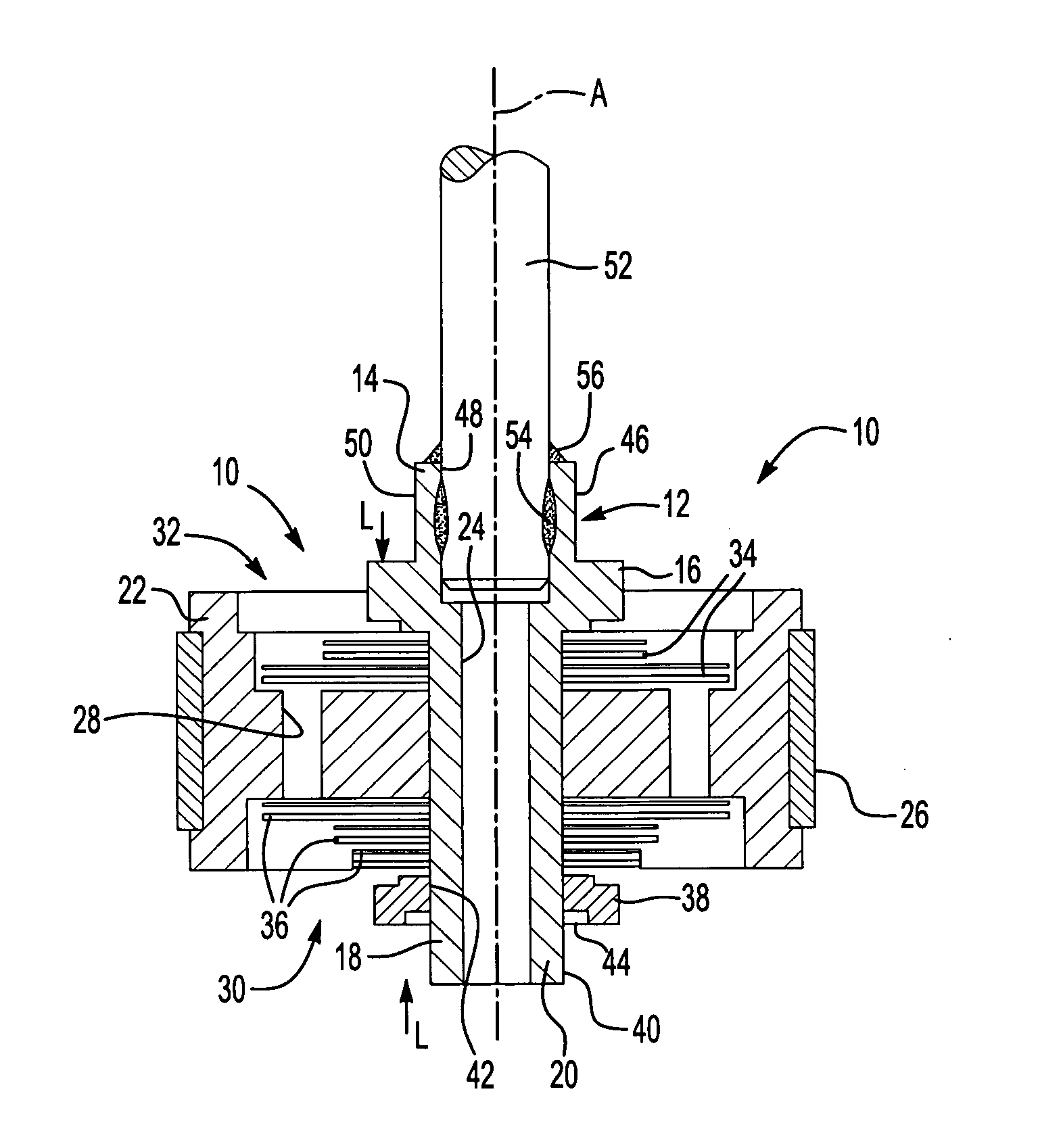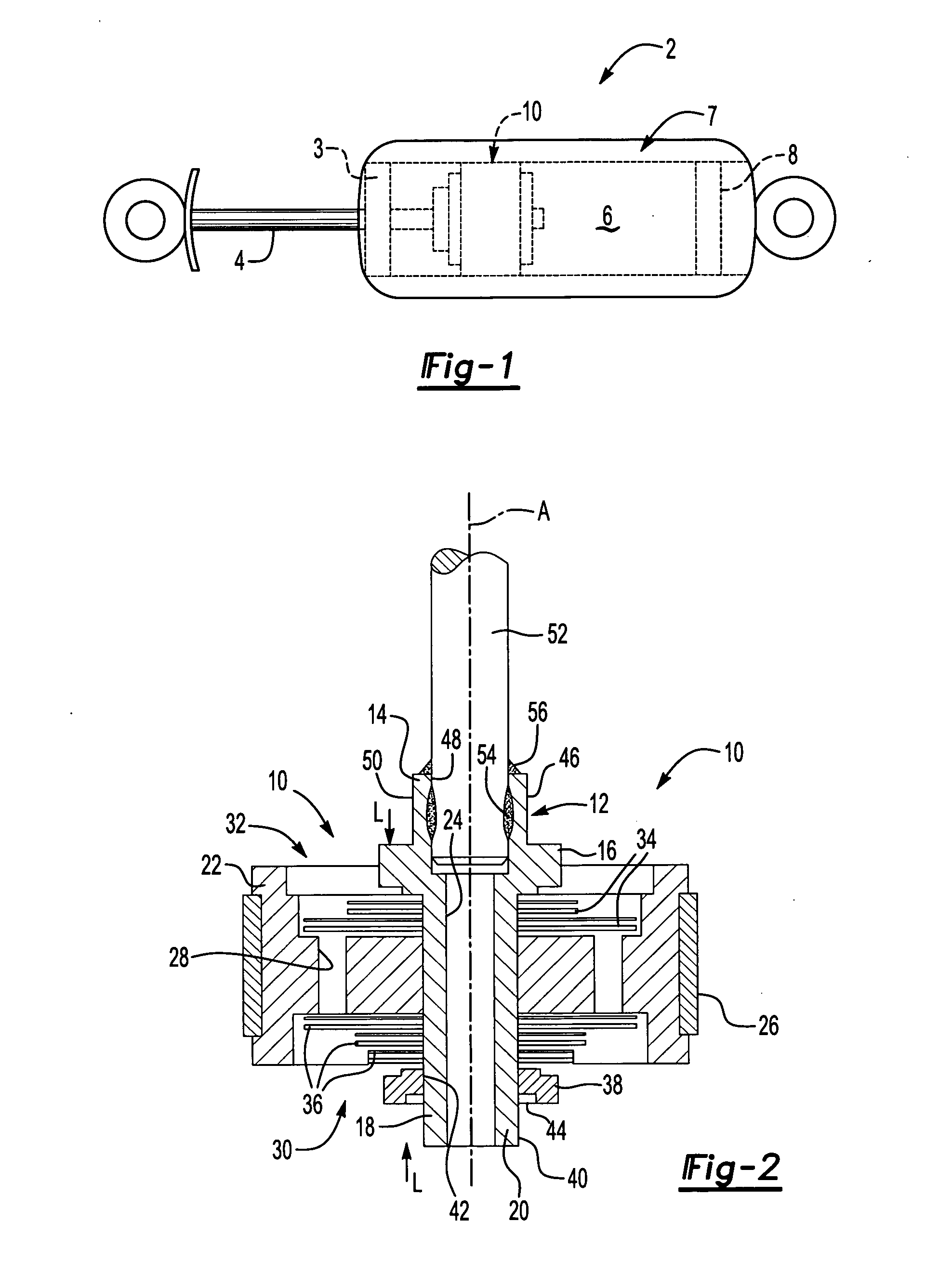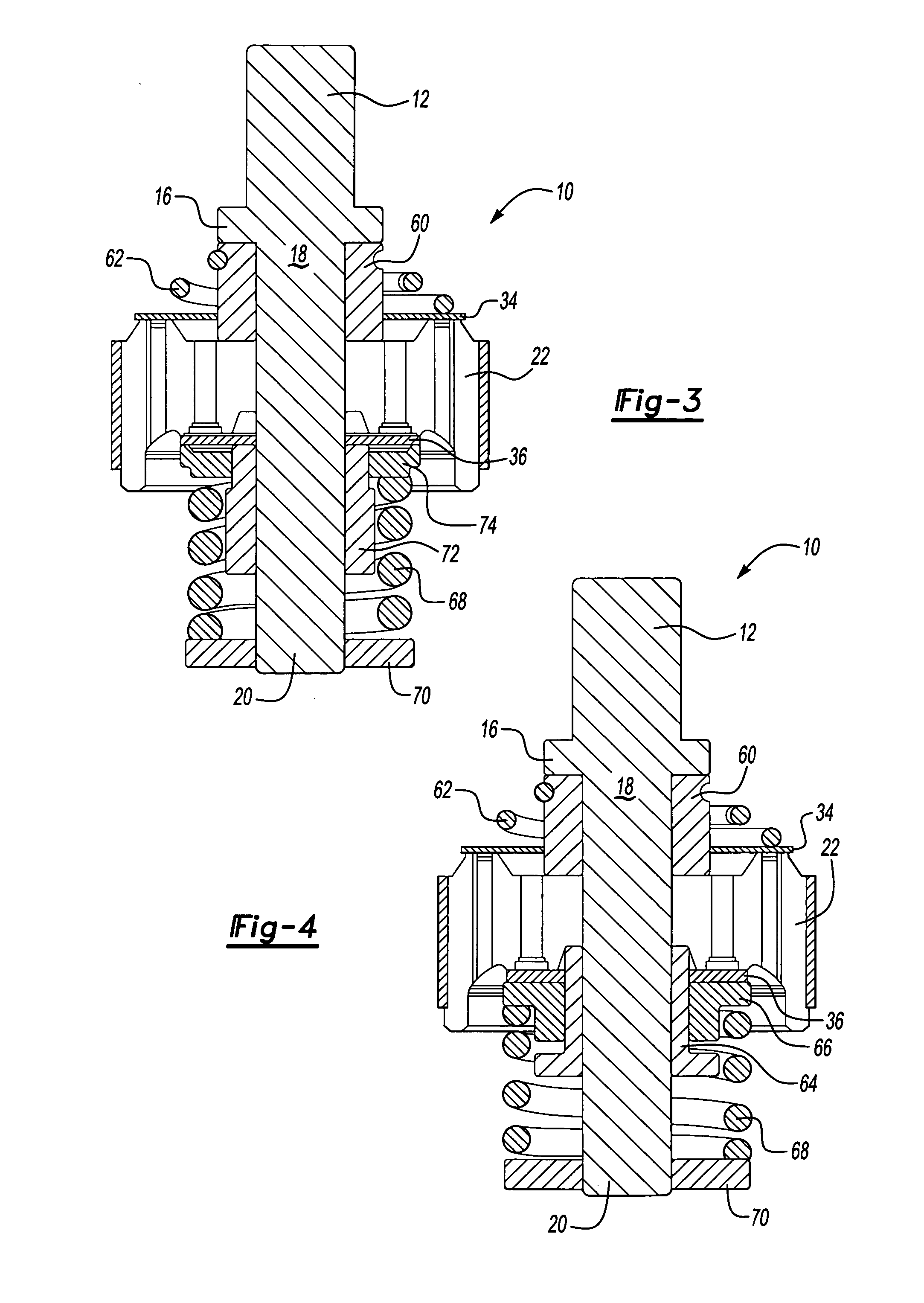Minimizing effects of tolerance stack-up in damper valve assemblies
a technology of damper valve and tolerance stack, which is applied in the direction of spring/damper, shock absorber, vibration damper, etc., can solve the problems of increasing scrap, adversely affecting the damper's damping characteristics, and undesirable variability within manufactured lots, so as to reduce variations
- Summary
- Abstract
- Description
- Claims
- Application Information
AI Technical Summary
Benefits of technology
Problems solved by technology
Method used
Image
Examples
Embodiment Construction
[0012] A twin tube shock absorber 2 is shown in FIG. 1. The shock absorber 2 schematically depicts a cylinder head 3 at one end slidingly receiving a rod 4, as is well known in the art. An end of the rod 4 is secured to the inventive piston valve assembly 10, which is arranged in a fluid chamber 6. During a compression stroke, the piston valve assembly 10 moves towards a base valve 8, which regulates the flow of fluid from the fluid chamber 6 to an outer chamber 7. As will be appreciated from the description below, the piston assembly 10 incorporates an inventive hub 12, which is shown in FIGS. 2-4.
[0013] A piston valve assembly 10 of the present invention is shown in FIG. 2. The assembly 10 may be used in a monotube or a twin tube shock absorber. The assembly 10 includes a hub 12 that is designed to be used with different sized pistons and deflection discs to facilitate a more modular damper assembly. However, it should be understood that the inventive clamping arrangement may als...
PUM
 Login to View More
Login to View More Abstract
Description
Claims
Application Information
 Login to View More
Login to View More - R&D
- Intellectual Property
- Life Sciences
- Materials
- Tech Scout
- Unparalleled Data Quality
- Higher Quality Content
- 60% Fewer Hallucinations
Browse by: Latest US Patents, China's latest patents, Technical Efficacy Thesaurus, Application Domain, Technology Topic, Popular Technical Reports.
© 2025 PatSnap. All rights reserved.Legal|Privacy policy|Modern Slavery Act Transparency Statement|Sitemap|About US| Contact US: help@patsnap.com



